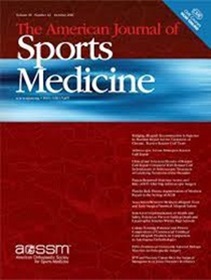Impacts of Physical Inactivity Models on Endothelial Function: A Systematic Review.
IF 9.3
1区 医学
Q1 SPORT SCIENCES
引用次数: 0
Abstract
BACKGROUND Endothelial dysfunction is associated with cardiovascular disease and cardiac events. Numerous studies demonstrate that a reduction in physical activity/exercise levels are associated with poor endothelial function. Yet, these studies use a plethora of models to mimic reduced activity levels which may have widely different results on endothelial function. It is pertinent to collectively review these articles to provide a comprehensive understanding of the impact of reduced activity on vascular health, as endothelial function is one of many factors that influences vascular tone. OBJECTIVE The purpose of this systematic review is to examine and synthesize the current literature regarding the effects of acutely (≤ ~ 2 months) reducing physical activity on endothelial function. METHODS This systematic review contains a search of two databases (PubMed, Web of Science) conducted by two reviewers. After screening and review, the search yielded 20 studies that were appraised and reviewed. RESULTS Articles were separated into four categories based on the type of inactivity intervention: reduction in daily physical activity interventions, detraining (removal of exercise) interventions, bed rest interventions, and immobilization interventions. Acute physical inactivity interventions were largely shown to reduce upper and lower limb artery flow-mediated dilation and lower limb microvascular function. CONCLUSION The results indicate that those studies with increased time spent in inactivity, as well as increased severity of inactivity, were more likely to have negative endothelial function outcomes. Future research should examine differences in the severity of physical inactivity interventions regarding endothelial function.缺乏运动模型对内皮功能的影响:一项系统综述。
背景:内皮功能障碍与心血管疾病和心脏事件有关。大量研究表明,身体活动/锻炼水平的降低与内皮功能低下有关。然而,这些研究使用了过多的模型来模拟活动水平的降低,这可能会对内皮功能产生截然不同的结果。综上所述,我们有必要对这些文章进行综述,以全面了解活动减少对血管健康的影响,因为内皮功能是影响血管张力的众多因素之一。目的本系统综述的目的是检查和综合目前关于急性(≤2个月)减少体力活动对内皮功能影响的文献。方法本系统综述包括由两位审稿人进行的两个数据库(PubMed, Web of Science)的检索。经过筛选和审查,搜索产生了20项研究,并对其进行了评估和审查。结果根据不活动干预的类型将文章分为四类:减少日常体力活动干预、去训练(停止运动)干预、卧床休息干预和固定活动干预。急性不运动干预在很大程度上显示可以降低上肢和下肢动脉血流介导的扩张和下肢微血管功能。结论:研究结果表明,不活动时间增加以及不活动严重程度增加的患者更有可能出现内皮功能不良的结果。未来的研究应该检查缺乏运动干预对内皮功能的严重程度的差异。
本文章由计算机程序翻译,如有差异,请以英文原文为准。
求助全文
约1分钟内获得全文
求助全文
来源期刊

Sports Medicine
医学-运动科学
CiteScore
18.40
自引率
5.10%
发文量
165
审稿时长
6-12 weeks
期刊介绍:
Sports Medicine focuses on providing definitive and comprehensive review articles that interpret and evaluate current literature, aiming to offer insights into research findings in the sports medicine and exercise field. The journal covers major topics such as sports medicine and sports science, medical syndromes associated with sport and exercise, clinical medicine's role in injury prevention and treatment, exercise for rehabilitation and health, and the application of physiological and biomechanical principles to specific sports.
Types of Articles:
Review Articles: Definitive and comprehensive reviews that interpret and evaluate current literature to provide rationale for and application of research findings.
Leading/Current Opinion Articles: Overviews of contentious or emerging issues in the field.
Original Research Articles: High-quality research articles.
Enhanced Features: Additional features like slide sets, videos, and animations aimed at increasing the visibility, readership, and educational value of the journal's content.
Plain Language Summaries: Summaries accompanying articles to assist readers in understanding important medical advances.
Peer Review Process:
All manuscripts undergo peer review by international experts to ensure quality and rigor. The journal also welcomes Letters to the Editor, which will be considered for publication.
 求助内容:
求助内容: 应助结果提醒方式:
应助结果提醒方式:


